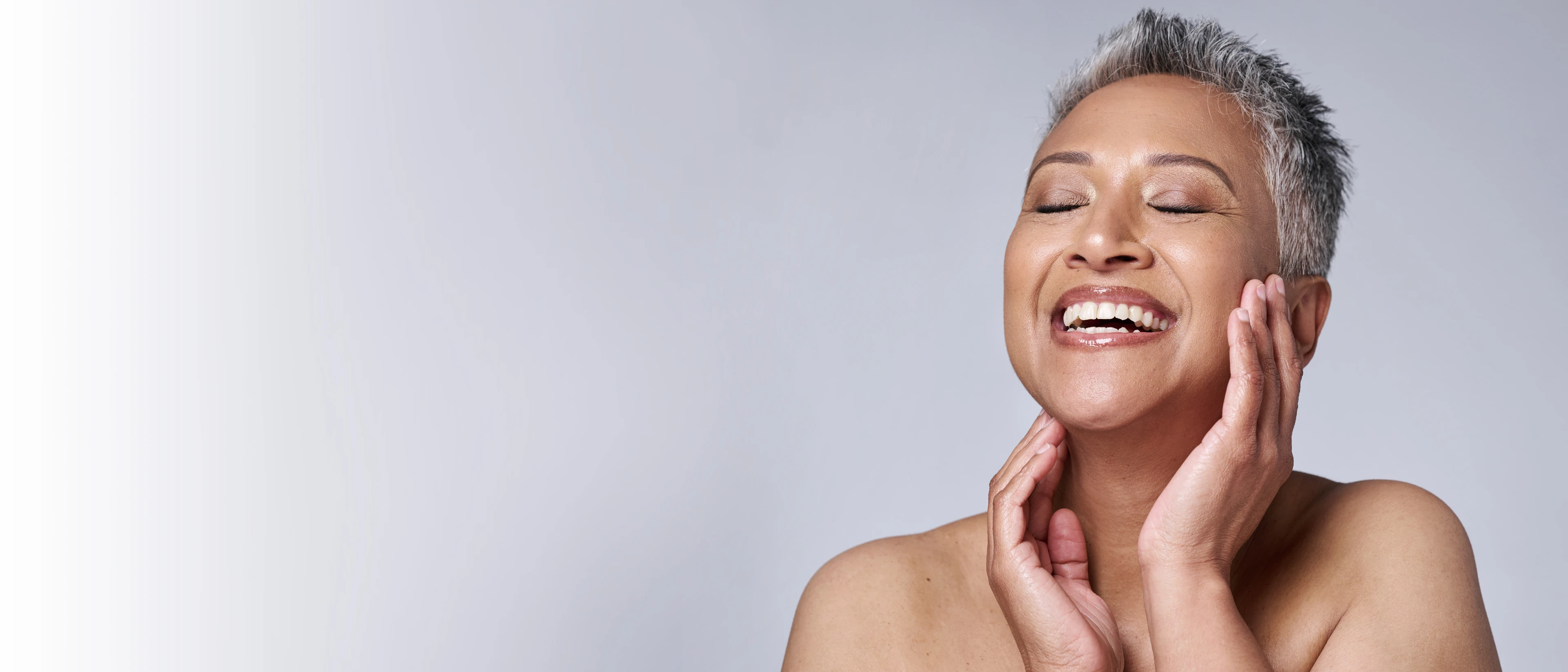What is Sculptra?
Sculptra is an injectable cosmetic filler that uses poly-L-lactic acid (PLLA) to stimulate collagen production, increase facial fat volume, and restore youthful-looking skin. It’s typically used to treat deep lines, creases, and facial fat loss due to aging or illness. Like other cosmetic fillers, it can be used on multiple areas of the face.
While Sculptra injections may take longer than its competitors to show results, it’s also longer-lasting than other fillers. Typically, Sculptra treatments require multiple sessions and take several months before you’ll see effects. But the results may last between two and three years.
If you’re looking to learn more about Sculptra injections–or schedule a consultation with a plastic surgeon–then contact St. Luke’s Plastic & Reconstructive Surgery.
Overview
Sculptra candidates include adults looking to restore fat volume loss and want to rejuvenate their face. This cosmetic filler can be used on multiple areas of the face, including the following:
- Cheekbones
- Cheeks
- Nose
- Chin
- Mouth
- Under eyes
Sculptra filler is injected into the sub-dermal layers of the skin to help your skin naturally renew itself. This will give you softer skin and a more youthful appearance.
To determine if Sculptra injections are right for you, schedule a consultation with a St. Luke’s plastic surgeon.
Getting Sculptra treatment can have numerous benefits and positively impact an individual’s self-confidence. The following list includes some of the most commonly reported benefits:
- Fuller temples
- Fuller cheeks
- Reduced jowls
- Reduced marionette lines
- Smoother skin
- Increased collagen production
This minimally invasive treatment has virtually no downtime and a minimal risk of allergic reaction. Additionally, its long-lasting results improve skin texture in a natural way. Having Sculptra can dramatically improve your body image and give you a more youthful appearance.
As with all cosmetic procedures, Sculptra has risks. Some of them include the following:
- Small bumps in the treated area
- Bleeding
- Tenderness
- Redness
- Bruising
Your Sculptra specialist will review a full list of risks before getting your consent.
Before the procedure
Before Sculptra at St. Luke’s Plastic & Reconstructive Surgery, your physician will answer questions you have and address your expectations. Additionally, they may review your overall health–including the following:
- General health
- Risk factors
- Medical conditions
- Drug allergies
- Current medications
- Herbal supplements
- Drug or tobacco use
- Past treatments with injectable fillers
On the day of your Sculptra, your cosmetic surgeon may take photos for your records.
During the procedure
Sculptra for cheeks
Sculptra for your cheeks can enhance your cheeks and natural facial contours. Because it stimulates your body’s own collagen response, Sculptra is a preferred way to increase fat volume in your cheeks and reduce signs of aging. Sculptra for your cheeks is a non-surgical facelift alternative and may last up to three years.Sculptra for temples
Sculptra for your temples can treat hollow temples and correct other temple defects. Because it stimulates your body’s own collagen response, Sculptra is a preferred way to increase fat volume in your temples and reduce signs of aging. Sculptra for your temples is a non-surgical facelift alternative and may last up to three years.Sculptra for neck
Sculptra for your neck can treat sagging, fine lines, and deep wrinkles that result from aging or weight-loss. Because it stimulates your body’s own collagen response, Sculptra for a sagging neck is a preferred way to increase fat volume and reduce signs of aging. Sculptra for a sagging neck is a non-surgical necklift alternative and may last up to three years.Sculptra for jawline and jowls
Sculptra for your jawline and jowls can change your jaw shape, highlight natural contours, and reduce jowls. Because it stimulates your body’s own collagen response, Sculptra for your jawline and jowls is a preferred way to increase fat volume and reduce signs of aging. Sculptra for your jawline and jowls is a non-surgical necklift alternative and may last up to three years.Sculptra for acne scars
Sculptra for acne scars can reduce the appearance of acne scars by smoothing the skin and adding necessary volume. Because it stimulates your body’s own collagen response, Sculptra for acne scars is a preferred way to fill depressions left by acne scars. Treating acne scars using Sculptra is a non-surgical approach and may last up to three years.After the procedure
Once the solution is injected, the body responds by producing collagen for several weeks. It may take multiple injections over the course of three to four months to achieve optimal results. You may experience temporary side effects like bruising, swelling, and tenderness—but these should subside within several days.
Sculptra is a temporary solution for cosmetic concerns, so you’ll need ongoing treatments to maintain your results. But results typically last between two and three years.
Because Sculptra injections are minimally invasive, there is no downtime or recovery. To maximize results, you should avoid the following:
- Makeup (four hours)
- Sun exposure (one day)
- Heat (one day)
- Pressure on injection site (two days)
- Strenuous activity (one day)
- Alcohol consumption (one day)
- Certain skincare products (two days)
- Certain aesthetic treatments (two weeks)
